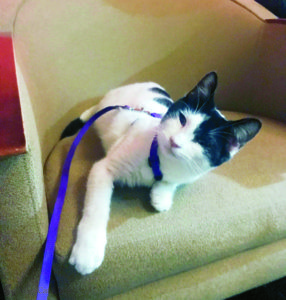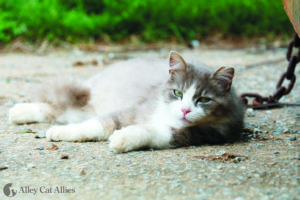More than a year after Hurricane Harvey ravaged parts of Texas and Louisiana in August 2017, rescue groups are still helping animals displaced by the storm as communities rebuildand Alley Cat Allies continues to support these efforts.
We teamed up with A Life to Live in coastal Baytown, Texas, which was hit hard by flooding, to carry out Trap-Neuter-Return (TNR) following Harvey. Now we’re working with the group to strengthen a TNR program in the city.
Austin Pets Alive! ran a temporary shelter in Houston after the hurricane, caring for more than 5,000 animals in the months following Harvey. Many were adopted or transferred to organizations that partner with Austin Pets Alive!
In Houston, some residents and community cat caregivers have not yet been able to return to their homes. “We’re seeing increases in community cat populations because the people who were feeding and doing TNR are sometimes no longer in the neighborhoods,” says Salise Shuttlesworth, founder and executive director at Friends for Life, which ran animal care at a “mega-shelter” for evacuees.
The group is increasing its TNR efforts with help from Alley Cat Allies’ online resources. More than 4,600 cats have been spayed or neutered free of charge since 2013.
The Louisiana-based CATNIP Foundation continues to educate the community about disaster preparedness. Many of the 200 cats it rescued following Hurricanes Harvey and Irma have been adopted.
Mary Heerwald, Austin Pets Alive! director of marketing and communications, says Hurricane Harvey showed how resilient animals can be in the face of disaster. “You see their will to live and you see they absolutely deserve a chance to live out their lives happily,” she says. “They need advocates.”



